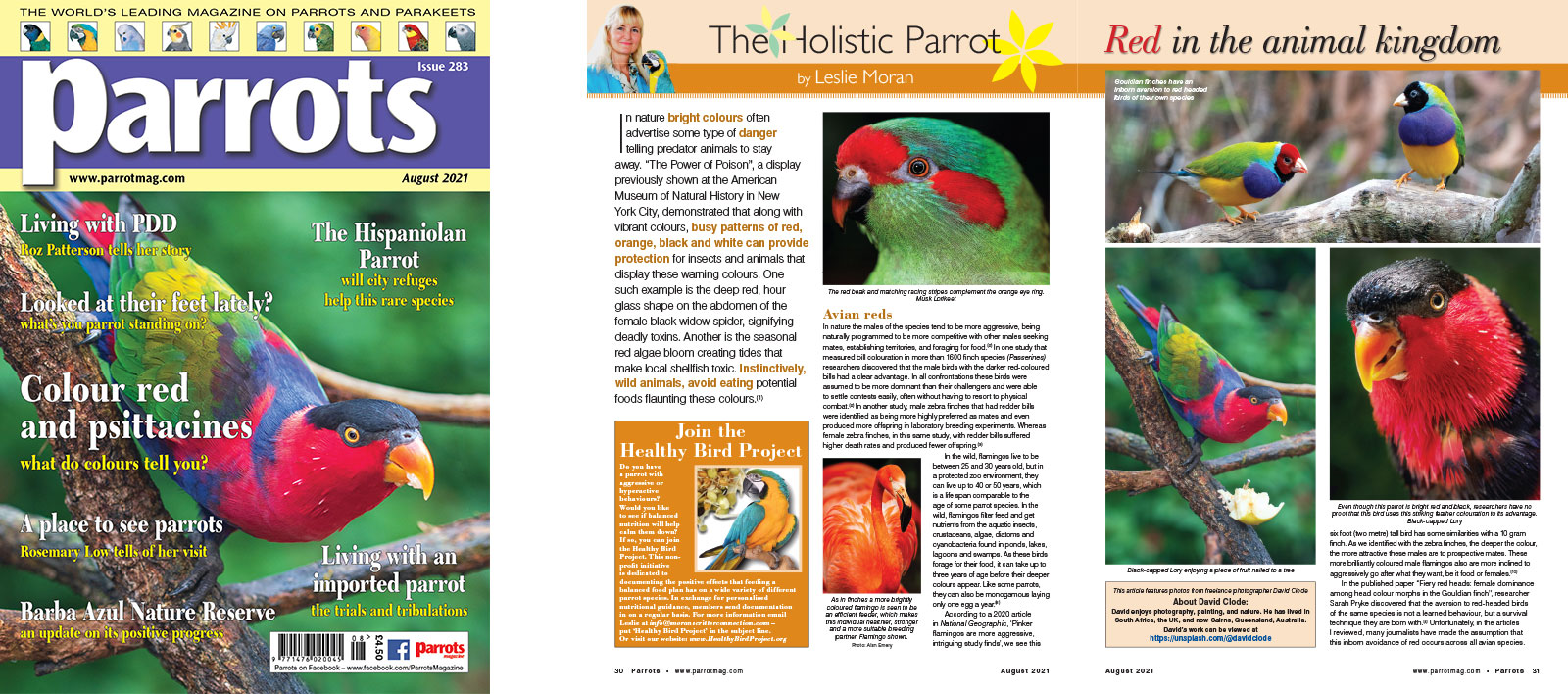
The Holistic Parrot by Leslie Moran
In nature bright colours often advertise some type of danger telling predator animals to stay away. “The Power of Poison”, a display previously shown at the American Museum of Natural History in New York City, demonstrated that along with vibrant colours, busy patterns of red, orange, black and white can provide protection for insects and animals that display these warning colours. One such example is the deep red, hour glass shape on the abdomen of the female black widow spider, signifying deadly toxins. Another is the seasonal red algae bloom creating tides that make local shellfish toxic. Instinctively, wild animals, avoid eating potential foods flaunting these colours.
In nature the males of the species tend to be more aggressive, being naturally programmed to be more competitive with other males seeking mates, establishing territories, and foraging for food. In one study that measured bill colouration in more than 1600 finch species (Passerines) researchers discovered that the male birds with the darker red-coloured bills had a clear advantage. In all confrontations these birds were assumed to be more dominant than their challengers and were able to settle contests easily, often without having to resort to physical combat. In another study, male zebra finches that had redder bills were identified as being more highly preferred as mates and even produced more offspring in laboratory breeding experiments. Whereas female zebra finches, in this same study, with redder bills suffered higher death rates and produced fewer offspring.
In the wild, flamingos live to be between 25 and 30 years old, but in a protected zoo environment, they can live up to 40 or 50 years, which is a life span comparable to the age of some parrot species. In the wild, flamingos filter feed and get nutrients from the aquatic insects, crustaceans, algae, diatoms and cyanobacteria found in ponds, lakes, lagoons and swamps. As these birds forage for their food, it can take up to three years of age before their deeper colours appear. Like some parrots, they can also be monogamous laying only one egg a year.








Parrot Chat
Buyers Guides
Breeding articles